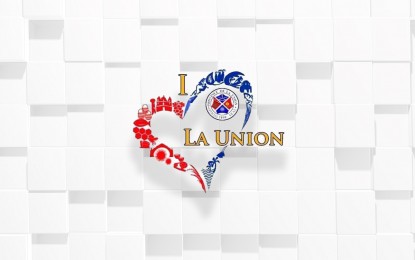
MALASIQUI, Pangasinan – La Union has completed the validation of a total of 359 cultural elements in the province as part of the provincial government’s bid to promote heritage preservation.
The list includes 111 elements in the natural heritage domain, 104 intangible cultural heritage, 71 tangible movable objects, 46 immovable heritage, 17 cultural institutions, and 10 significant personalities, the La Union Provincial Information Office said in a statement on Tuesday.
Among the significant findings are Panagdamili (potterymaking), Panagabel (loomweaving), Gayang (Ethnographic object), San Pedro Bell (tangible), and Cedula De Bautismo (archival).
The La Union Provincial Tourism Office on Wednesday said Panagdamili has been a part of human history since ancient times, marking the rise of civilization and the development.
It said Barangay Taboc in San Juan town is one of the areas where the art of pottery has thrived.
"Damili" is one of the most versatile products of arts and crafts in La Union, it said, since these can be used as planters or for decorative purposes.
"Additionally, its various forms can be utilized for storing food, dry goods, and water. It can also be crafted into a "palayok" (pot) for cooking," it said.
The practice of panagdamili, or pottery making, in San Juan, La Union has been around for centuries and it is believed to have originated from the Ilocano people, who were one of the earliest settlers of the region.
"The Ilocanos are known for their skills in pottery making, and their techniques have been passed down from generation to generation," it added.
On the other hand, the Panagabel is a traditional weaving practice done in the different villages in Bangar, including Central West 3, Central West 2, Barraca, Alzate, Quitarong, Paratong Norte, Paratong 3 and Paratong 4, the tourism office said.
Meanwhile, gayang is a sturdy and long-lasting war spear, distinguished by its linear body and a double-barbed blade design, which endows it with effective thrusting and hooking capabilities. Its handle is meticulously crafted from one of the hardest woods known as adaan, often referred to as stone wood.
Among those verified under the tangible objects is the San Pedro Bell, which is owned by the Roman Catholic Bishop of the Diocese of San Fernando La Union. It was dedicated to Saints Peter and Paul Church.
It was originally presented to Friar Mariano Garcia on behalf of the church of Sts. Peter and Paul Church in 1883 by Governor Mariona Balancio and Hilario Calica. It remained in the church belfry until 1901 until it was removed by the US forces stationed in the Philippines, the tourism office added.
The Cedula De Bautismo (baptismal certificate) printed on standard, regular paper measuring six inches by eight inches was identified under the archival.
The paper featured a design consisting of straight lines and dotted lines, with a 0.5-inch margin around the edges.
Additionally, there was a printed picture depicting the baptism of Christ located at the upper center of the paper.
The inventory also included the famous churches in the province, which have long become tourist attractions; unique flora like the green jade vine, and flora such as pawikan; ancestral houses; rituals and social practices like the sangadil; and personalities like traditional healers.
The province is the first in the entire Ilocos Region to complete the National Commission for Culture and the Arts (NCCA) cultural mapping program.
NCCA defined cultural mapping as an approach used to identify, record, and use cultural resources and activities for building communities, where communities map what is important to them (based on Cook and Taylor, A Contemporary Guide to Cultural Mapping. An ASEAN-Australia Perspective).
Through the conduct of cultural mapping, the local government unit (LGU) and other stakeholders can identify the distinct cultural resources of their community and at the same time can properly record a heritage resource for future reference, the NCCA said.
“Moreover, the process can generate interest on heritage resources among users and non-users of cultural properties. Eventually, they can develop or establish a heritage conservation council who shall lead in the conservation of the local cultural heritage as well as develop legislation, bills, and guidelines for safeguarding the cultural heritage of the community,” it added.
La Union Governor Raphaelle Veronica Ortega-David, in a separate statement, said the inventory is a timely product to celebrate the National Heritage Month this May.
“As we finally validated our cultural elements which were collected through years of dedicated effort and collaboration, may we reflect on the importance of our cultural mapping program, which should not only serve as a tool for conservation but also to engage communities and people in intergenerational dialogues,” she said.
La Union’s cultural mapping program began in 2022 wherein the provincial government hired around 10 cultural mappers for the data gathering. The finished product will be printed and reproduced on June to July this year.
The validators, it said, were composed of community leaders, key informants, government representatives and other cultural stakeholders, whose inputs and expertise were crucial in refining the cultural map and verifying the entries in the inventory.
External validators involved in the process were Dr. Leah Abayao, History Professor of University of the Philippines Baguio; Dr. Danilo Alterado, former Philosophy Professor of Saint Louis University; and Dr. Jocelyn Alimondo, former Administrator of Diocese of Baguio Schools.
NCCA said the objectives of cultural mapping included understanding the basic frameworks on culture and heritage in the context of Republic Act No. 10066 or the National Heritage Act and other laws and mandates; appreciate the value of the various cultural resources of the community; apply the different tools and methods for gathering, classifying, and analyzing local cultural data and information through the conduct of cultural mapping; consolidate local culture profile and generate baseline data for cultural statistics; and recommend mechanisms to integrate profiles and baseline statistics in LGU development plans, programs, and activities. (PNA)
